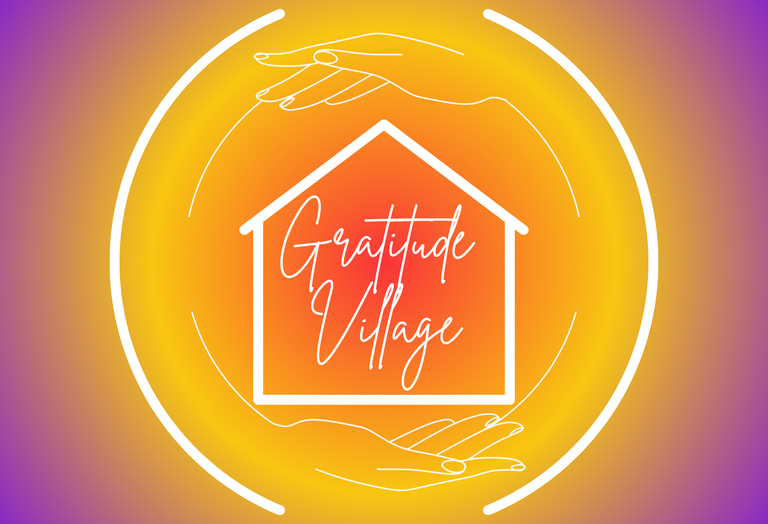Join our next Info Session December 16 from 5:30-6:30 MST Via Zoom (register for link)
The Epidemic of Loneliness: How Cohousing Offers a Path to Connection
In today’s hyper-connected world, it may seem surprising that loneliness has become an epidemic. The consequences are severe—not only does loneliness negatively impact mental health, leading to depression and anxiety, but it is also linked to physical health issues such as heart disease, weakened immune function, and even a shorter lifespan. Fortunately, cohousing—a modern take on an age-old concept—offers a powerful antidote to the epidemic of loneliness by fostering community, collaboration, and authentic connection.
Gratitude Village
11/20/20244 min read


The Epidemic of Loneliness: How Cohousing Offers a Path to Connection
In today’s hyper-connected world, it may seem surprising that loneliness has become an epidemic. Despite the prevalence of social media, video calls, and instant messaging, many people feel more isolated than ever. A 2020 report by Cigna revealed that over 60% of Americans experience loneliness, a staggering statistic that has only grown in the aftermath of the COVID-19 pandemic. The consequences are severe—not only does loneliness negatively impact mental health, leading to depression and anxiety, but it is also linked to physical health issues such as heart disease, weakened immune function, and even a shorter lifespan.
At its core, loneliness stems from a lack of meaningful relationships and regular, face-to-face human interaction. As traditional family structures and neighborhood bonds weaken, people find themselves increasingly disconnected from one another. While technology offers an illusion of connection, it often lacks the depth and authenticity of real, in-person relationships. Fortunately, cohousing—a modern take on an age-old concept—offers a powerful antidote to the epidemic of loneliness by fostering community, collaboration, and authentic connection.
The Roots of the Loneliness Epidemic
Loneliness affects people across all age groups and demographics, though certain populations are particularly vulnerable. For example, older adults often face isolation as they retire, lose spouses, or become physically unable to engage in social activities. Young adults, surprisingly, report high levels of loneliness as well, particularly in today’s transient, career-driven society. Moving for jobs, long work hours, and reliance on social media can lead to superficial connections rather than deep, lasting relationships.
Families, too, can experience isolation, especially as busy schedules and individualistic living reduce the time spent together. In urban areas, people may live in apartment complexes surrounded by hundreds of neighbors yet never know a single one by name. Suburban neighborhoods, designed for privacy, can further isolate residents, with houses spaced far apart and social interactions limited to short greetings.
What Is Cohousing?
Cohousing communities seek to solve this problem by returning to a more intentional way of living. Developed in Denmark in the 1960s, cohousing has since spread across the globe as a modern solution to the growing disconnect between people. In cohousing, residents live in private homes but share common spaces, such as community kitchens, gardens, and activity rooms. These shared spaces become the heartbeat of the community, encouraging frequent interaction and collaboration.
Unlike traditional neighborhoods, where privacy often trumps connection, cohousing is designed to bring people together. Communities are typically structured to promote social interaction, with homes clustered around shared courtyards or pathways and communal areas that facilitate spontaneous conversations. Regular community meals, meetings, and events further strengthen these connections, ensuring that residents not only know each other but also actively support one another.
Cohousing: A Remedy for Loneliness
The built-in social structure of cohousing provides a powerful solution to loneliness. In cohousing, people don’t just share a space—they share their lives. Residents work together to maintain the community, from organizing social events to managing shared gardens or community projects. This collaborative approach fosters deep relationships based on mutual trust, respect, and interdependence, qualities that are often missing in today’s society.
For older adults, cohousing offers a chance to remain socially active and engaged as they age. Rather than facing the isolation that often accompanies retirement or the loss of a spouse, elders in cohousing can continue to contribute to the community. They may offer childcare, mentorship, or guidance to younger residents, creating a sense of purpose and belonging. At the same time, younger residents benefit from the wisdom and experience of their elder neighbors, creating a symbiotic relationship that enriches the lives of both.
Families in cohousing also benefit from the support of a tight-knit community. Parents can rely on neighbors for childcare, emotional support, and shared parenting duties. Children, in turn, grow up surrounded by a diverse group of adults and peers, forming relationships that extend beyond their immediate family. These interactions create a “village” dynamic, where children feel safe, supported, and connected to a larger network.
Building Connection Through Design
One of the key reasons cohousing is so effective at combating loneliness is its intentional design. Unlike conventional housing, where the focus is on individual privacy, cohousing is designed to encourage social interaction. Homes are often positioned to face shared spaces, such as courtyards or common rooms, where residents can easily gather for conversation or activities. Pathways are designed to foster spontaneous interactions, with residents frequently crossing paths throughout the day.
Additionally, cohousing communities are built on a foundation of shared values, such as sustainability, cooperation, and mutual support. This common ground strengthens the bonds between residents, creating a sense of unity and purpose that is often missing in modern neighborhoods. With shared decision-making processes, residents have a say in how their community operates, further deepening their connection to both the community and each other.
The Future of Living: Reclaiming Connection
As the loneliness epidemic continues to grow, it’s clear that our current living arrangements are not working. People crave connection, but the design of modern neighborhoods, the demands of work, and the rise of digital communication have made it increasingly difficult to cultivate meaningful relationships. Cohousing offers a practical, effective solution to this problem by creating environments where human connection is prioritized.
At its core, cohousing is about belonging—about creating a space where people feel valued, supported, and known. As the world becomes more fast-paced and isolating, the need for intentional communities like cohousing has never been greater. By fostering deep relationships, promoting collaboration, and encouraging face-to-face interaction, cohousing provides a way to address the loneliness epidemic and build a future rooted in connection. In cohousing, no one has to feel alone.
COMMUNITY
Join us in embracing nature, diversity and connection.
Sustainability
DIVERSITY
info@gratitudevillageco.com
720-689-4821
© 2025. All rights reserved.
AFFORDABILITY
Gratitude Village Inc. is a 501(c)3 charitable corporation that values diversity, equity, and inclusion as essential to our mission
Subscribe to our Substack
Refund Policy




Gratitude Village is a Proud Member of these organizations
